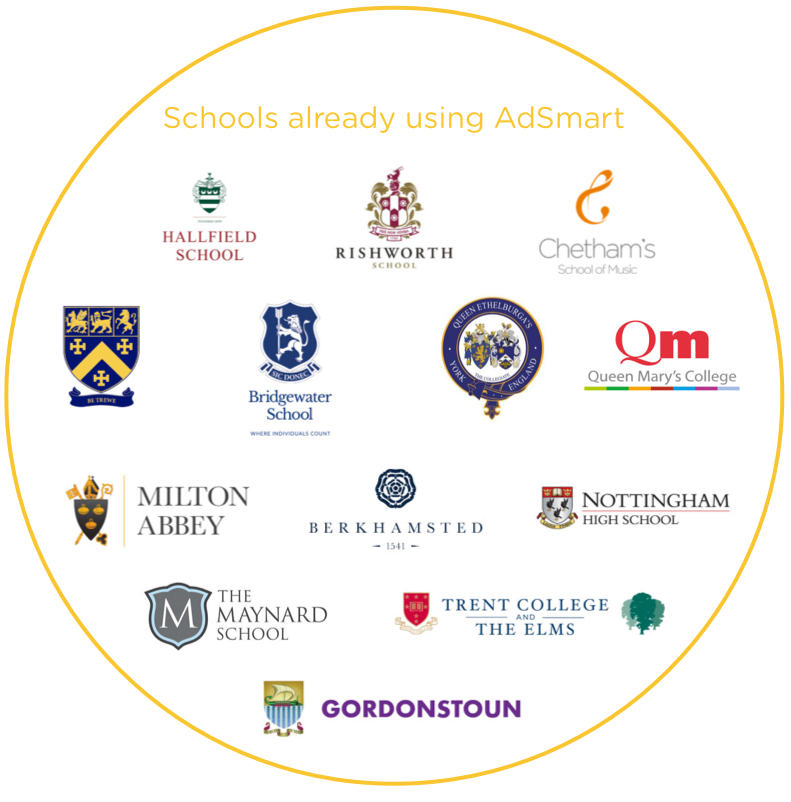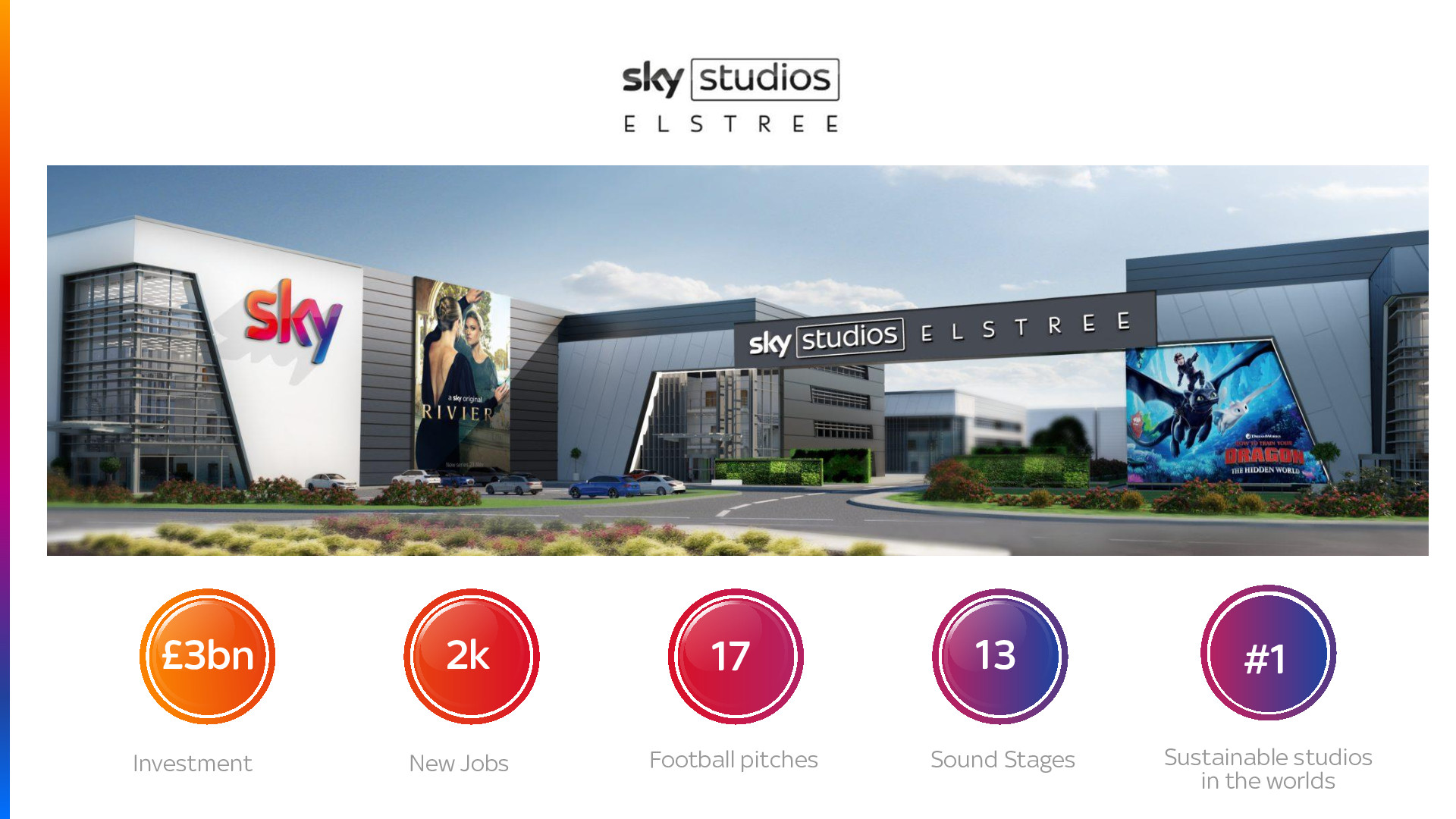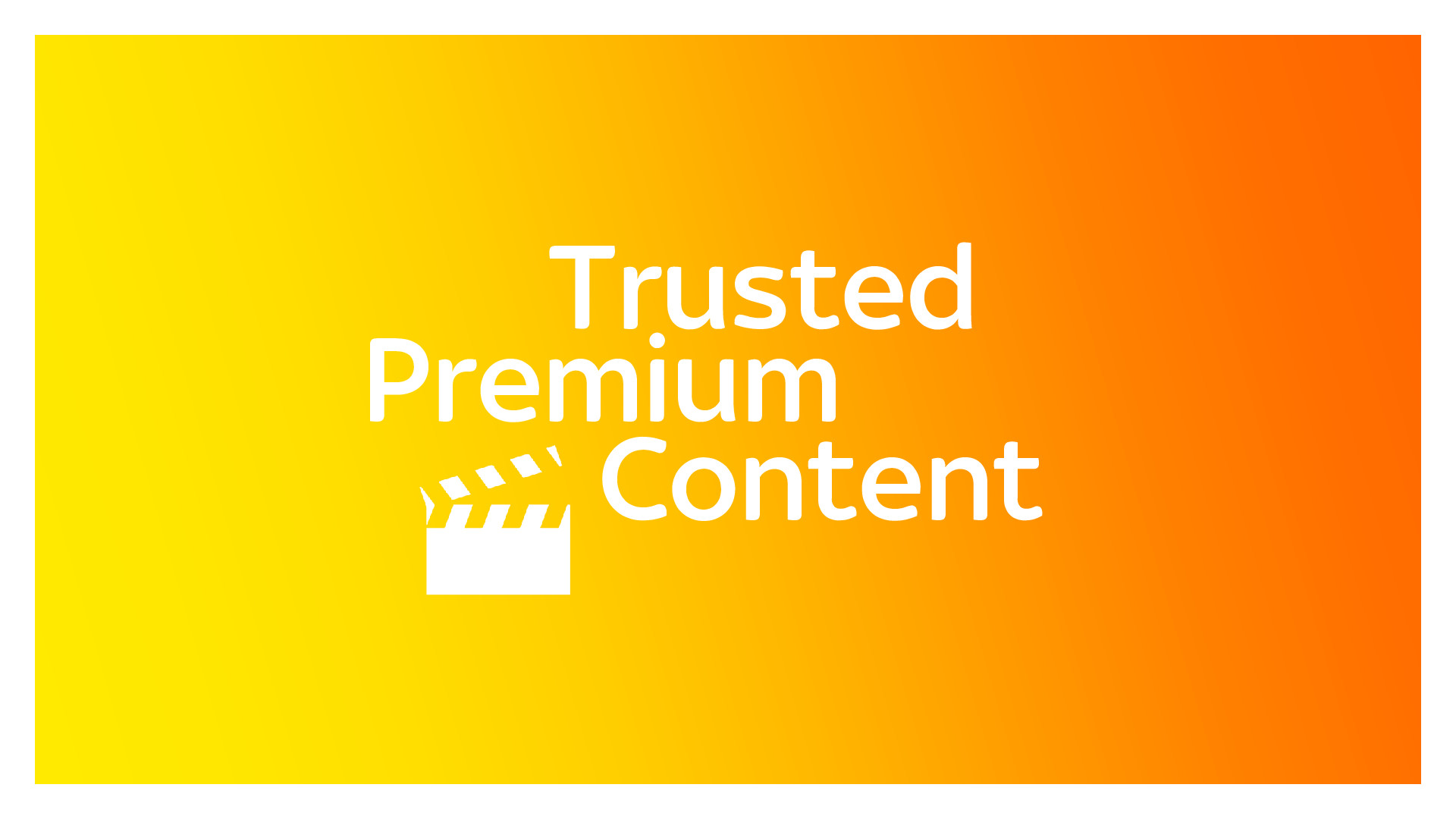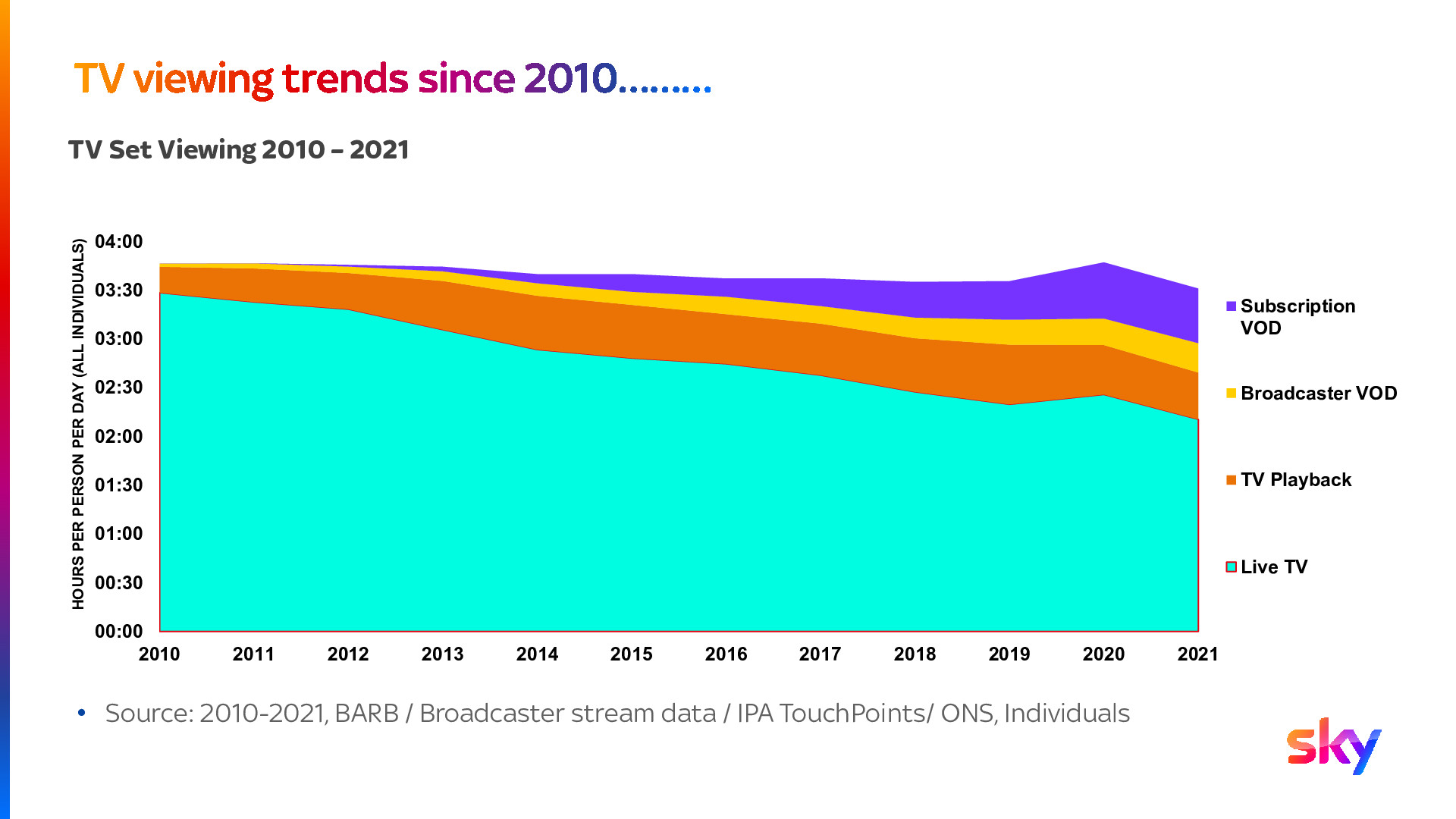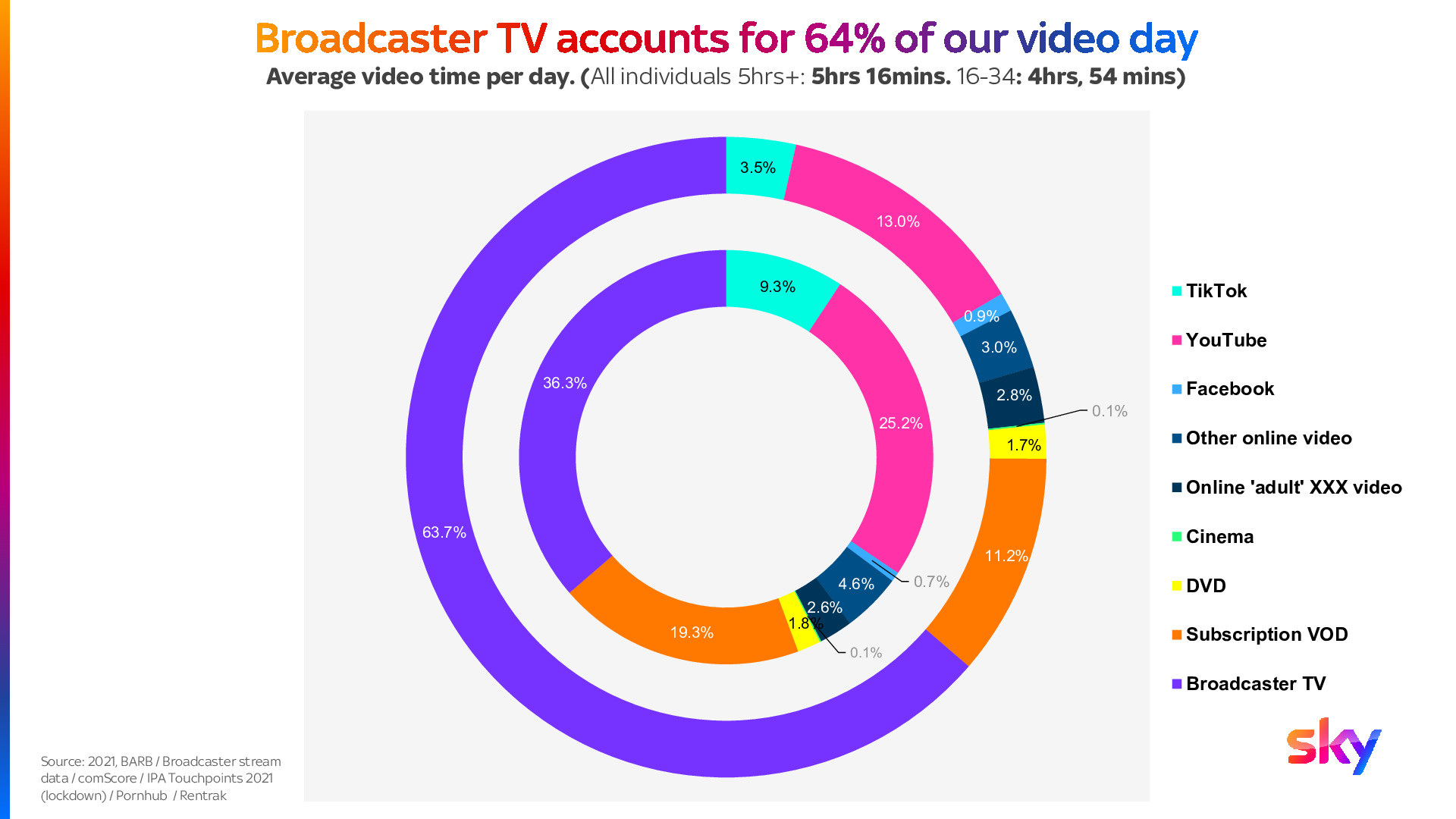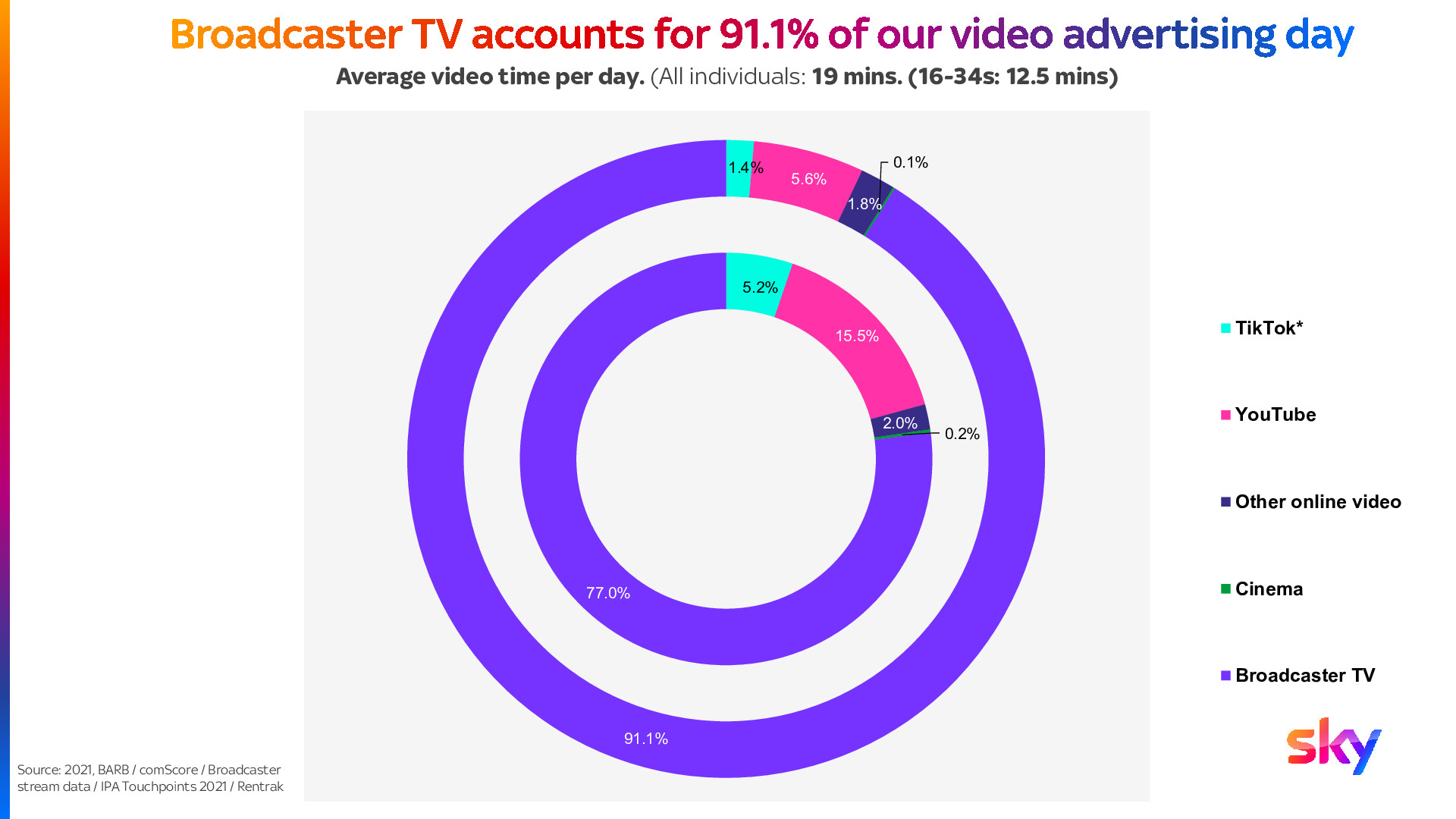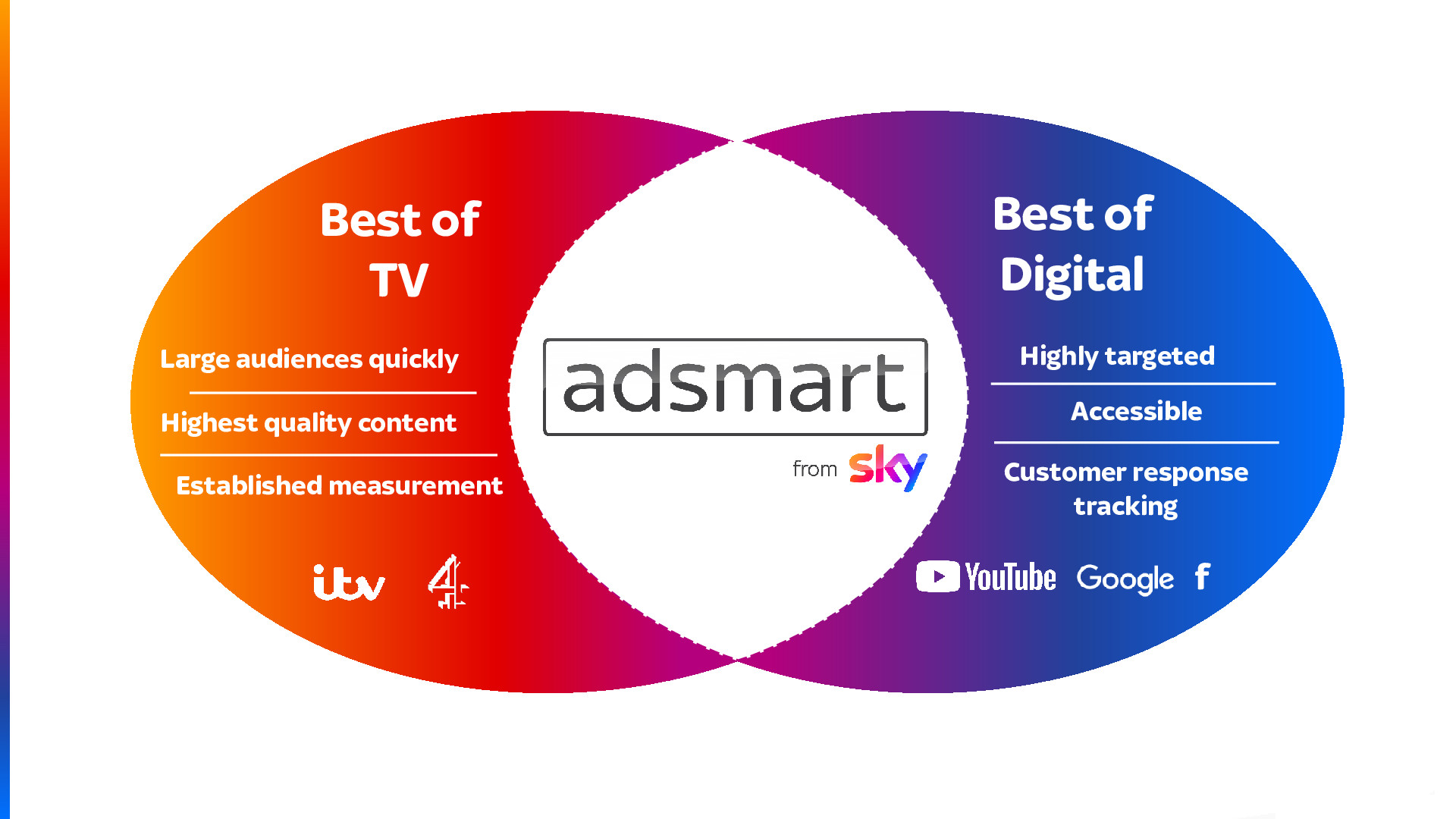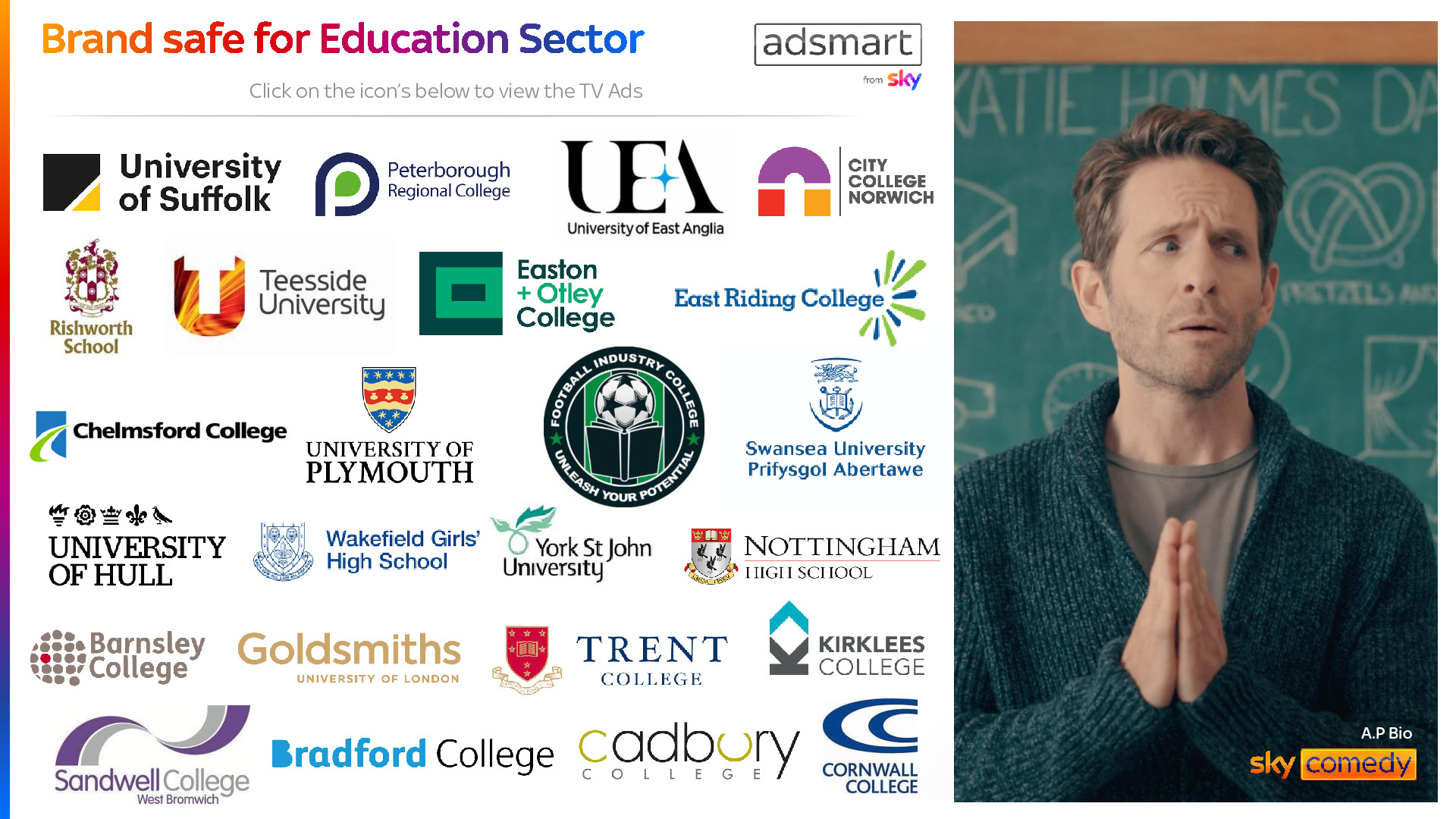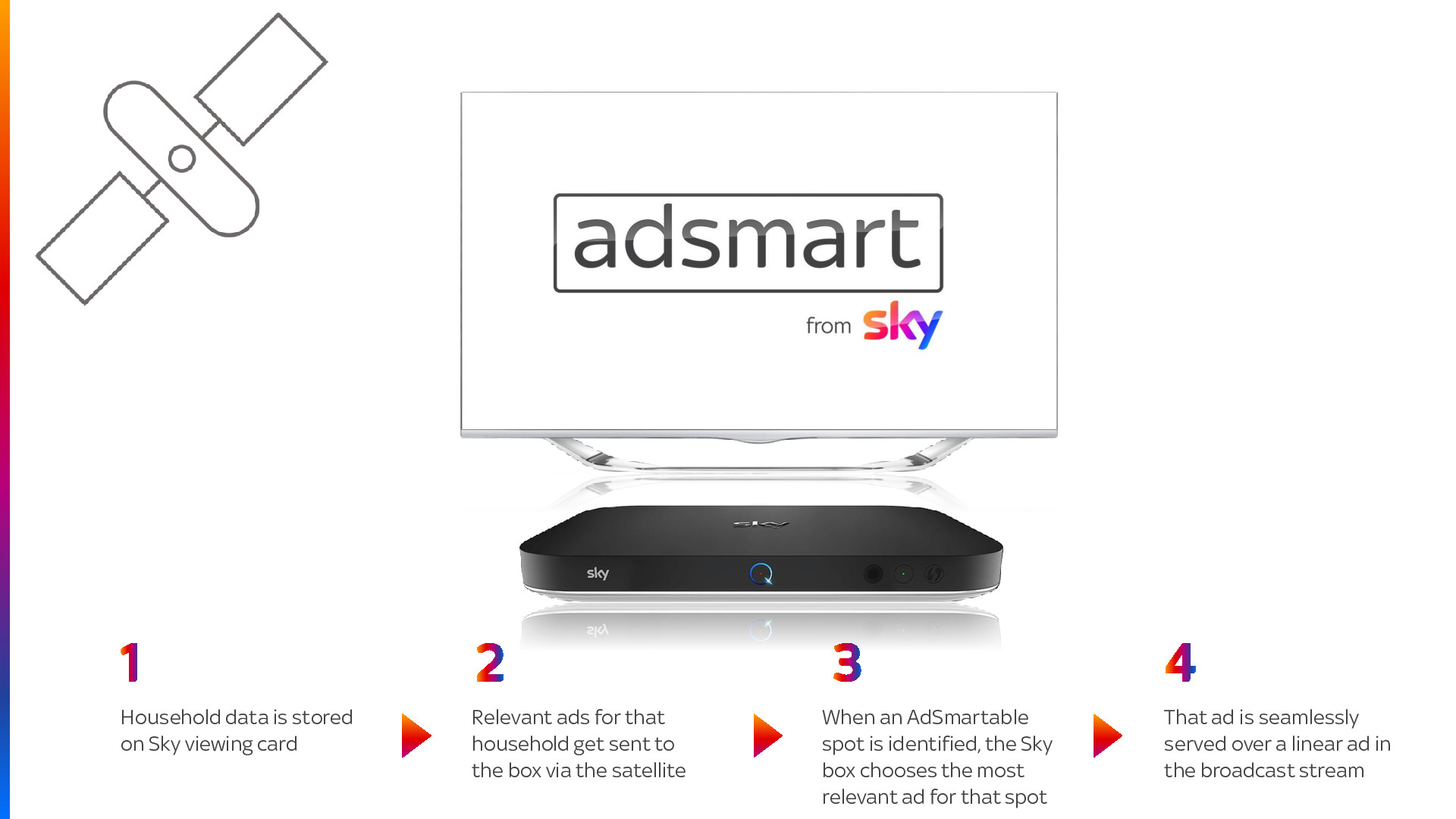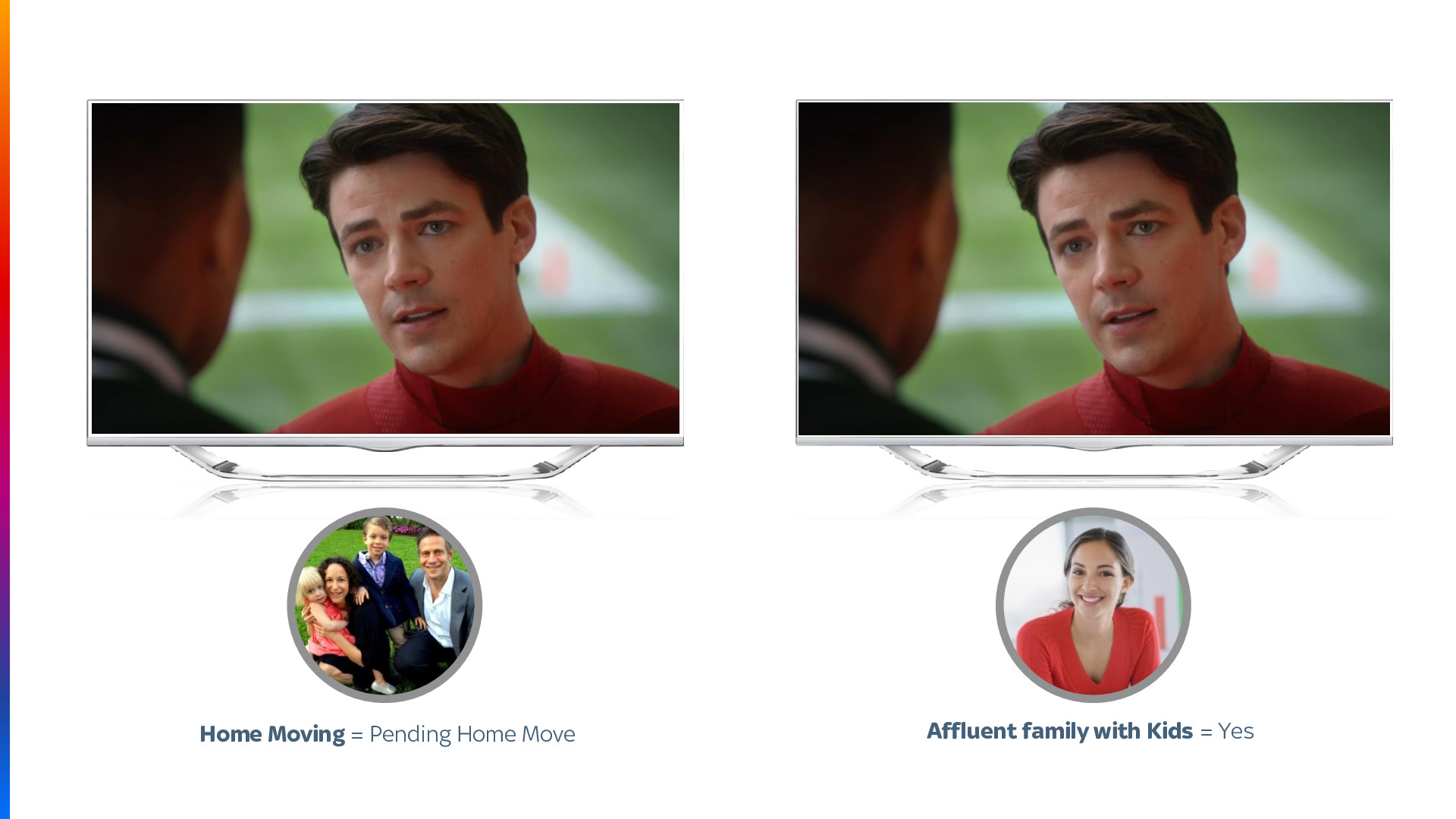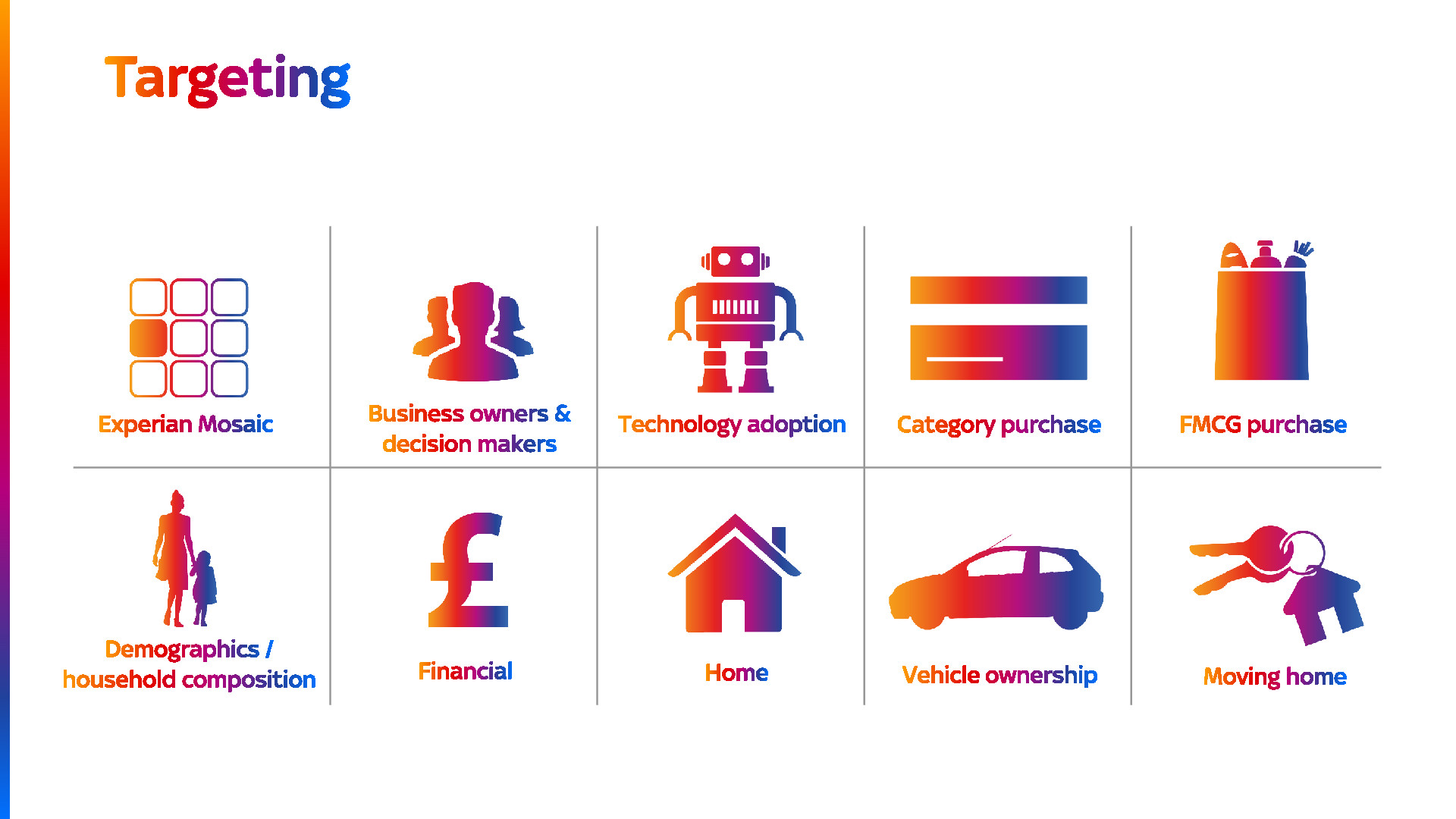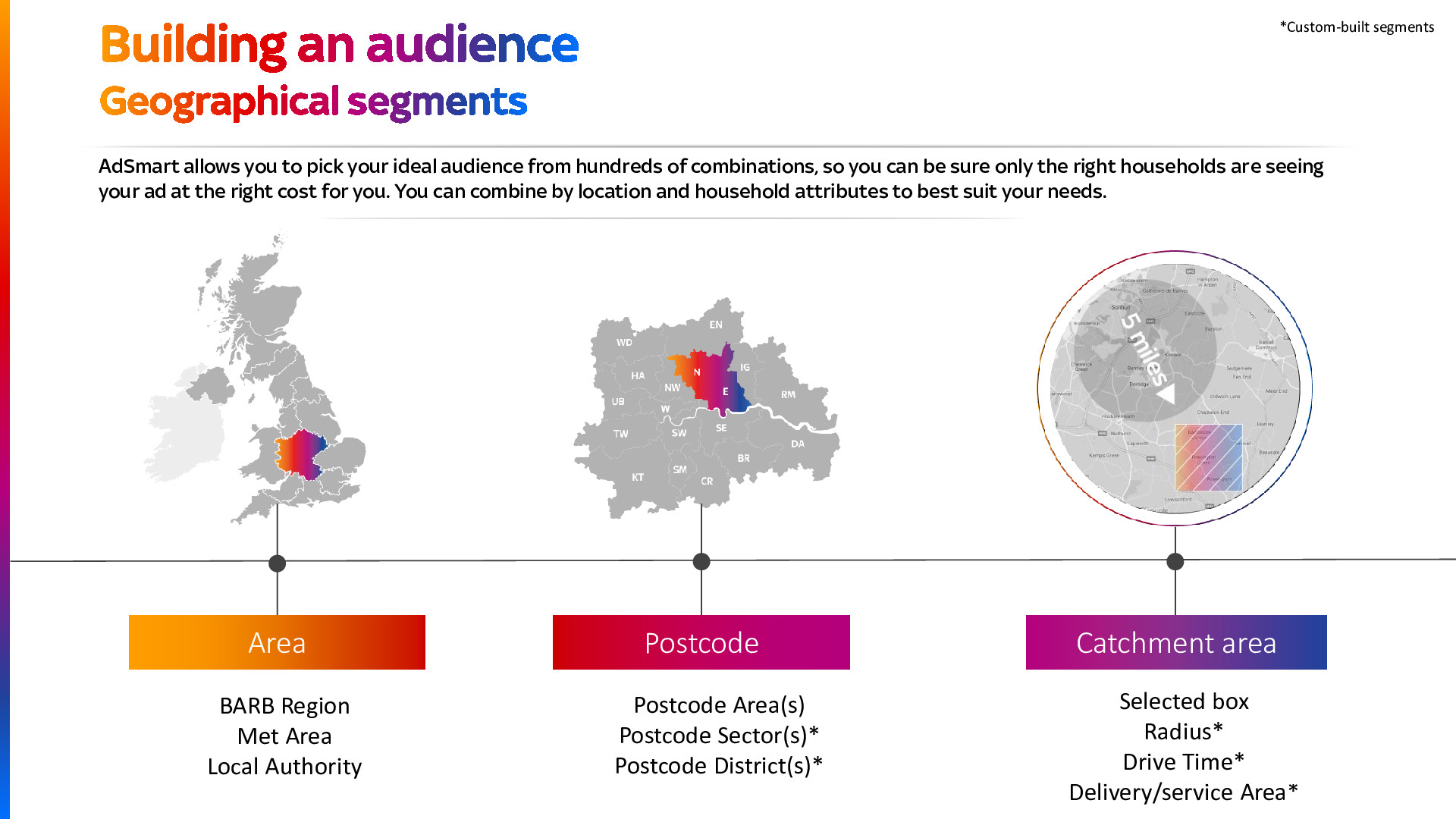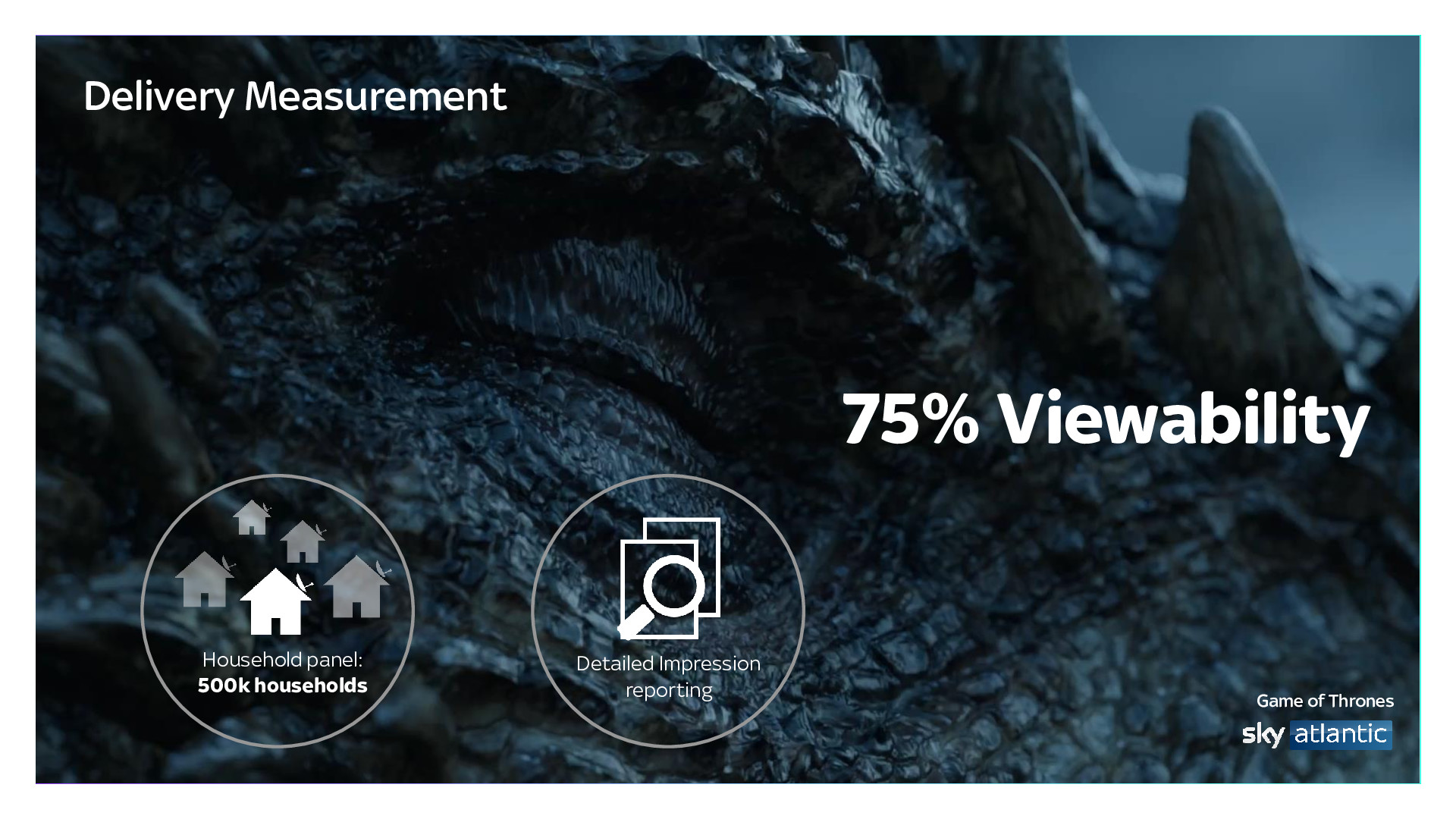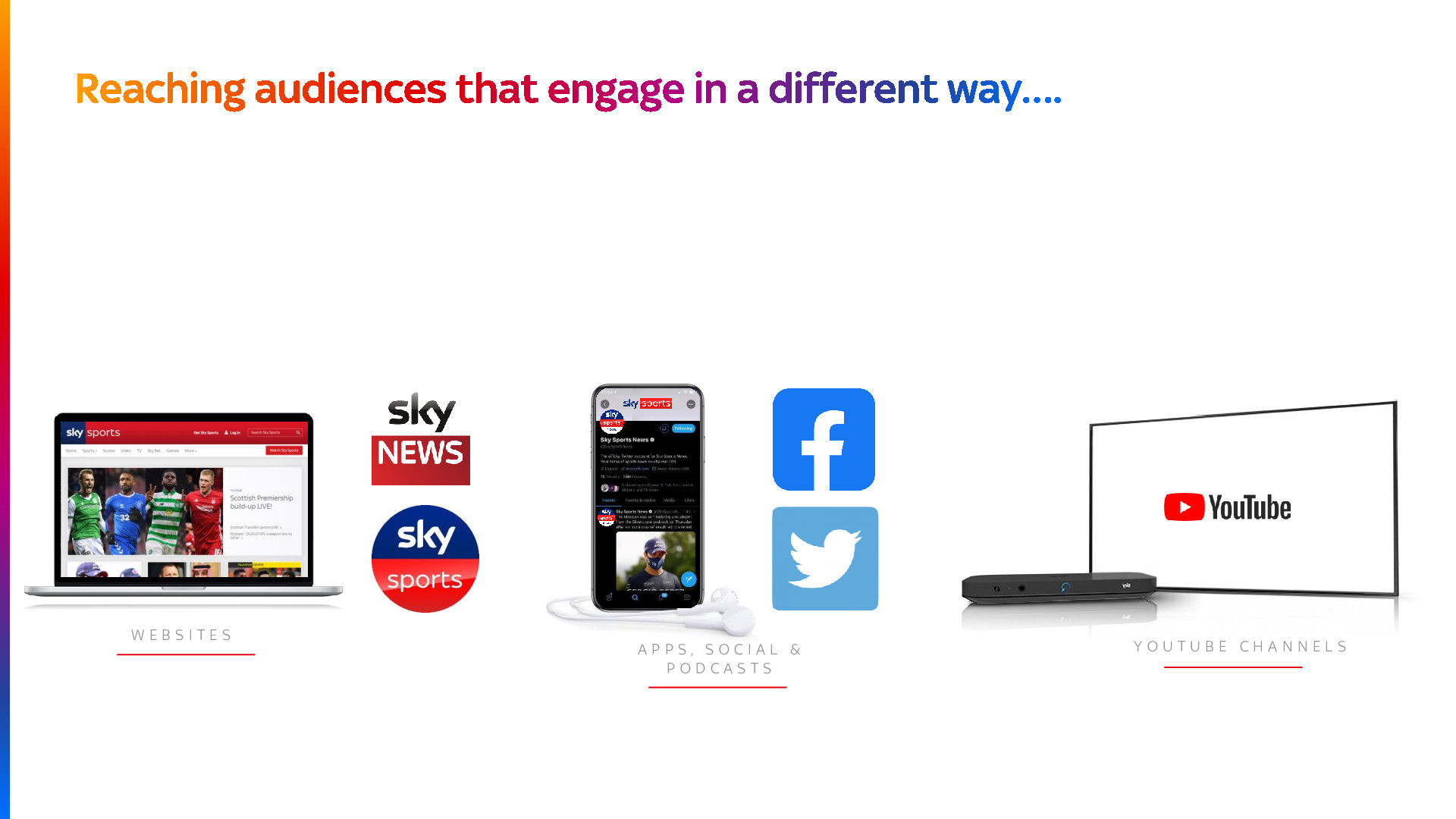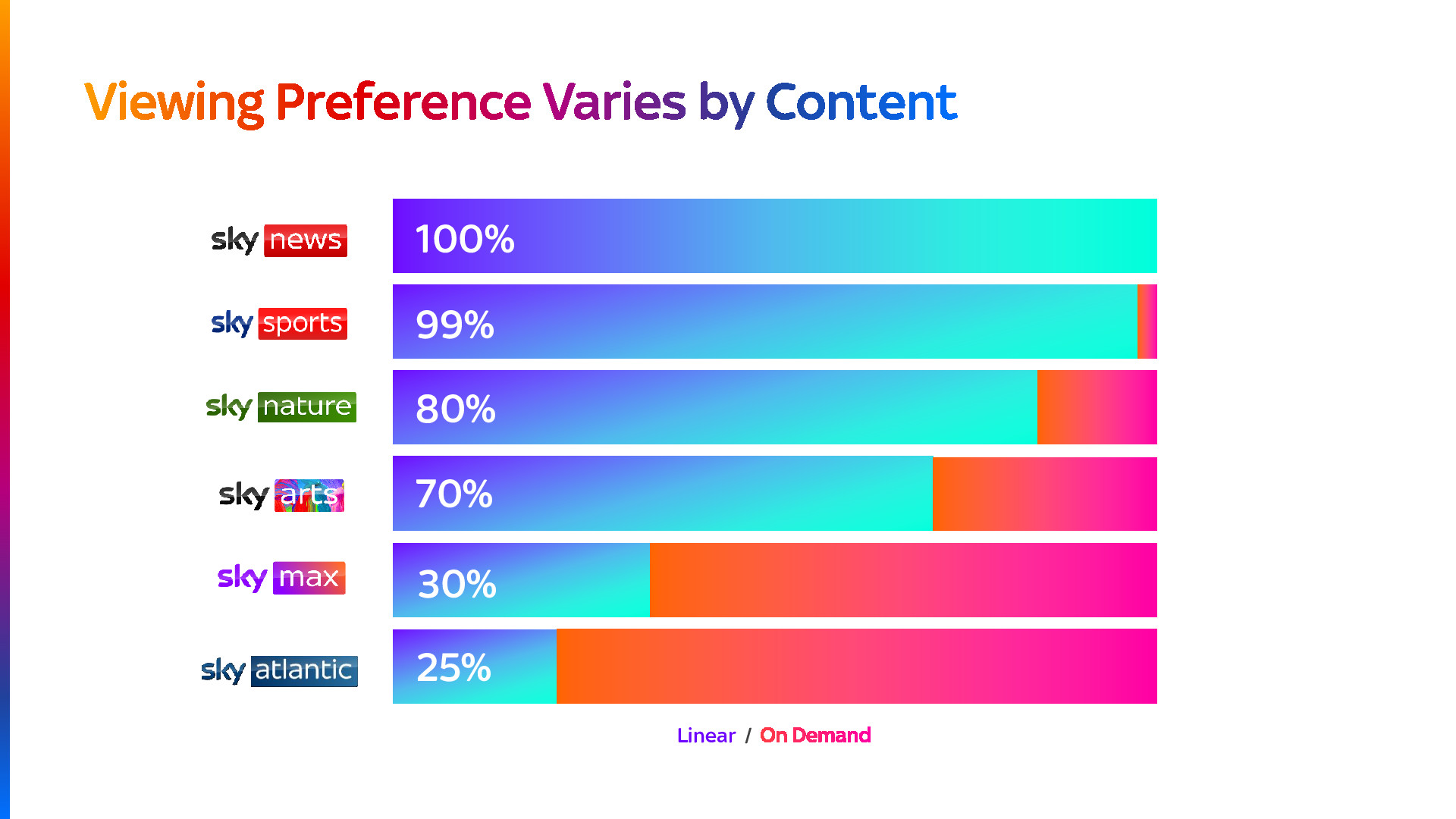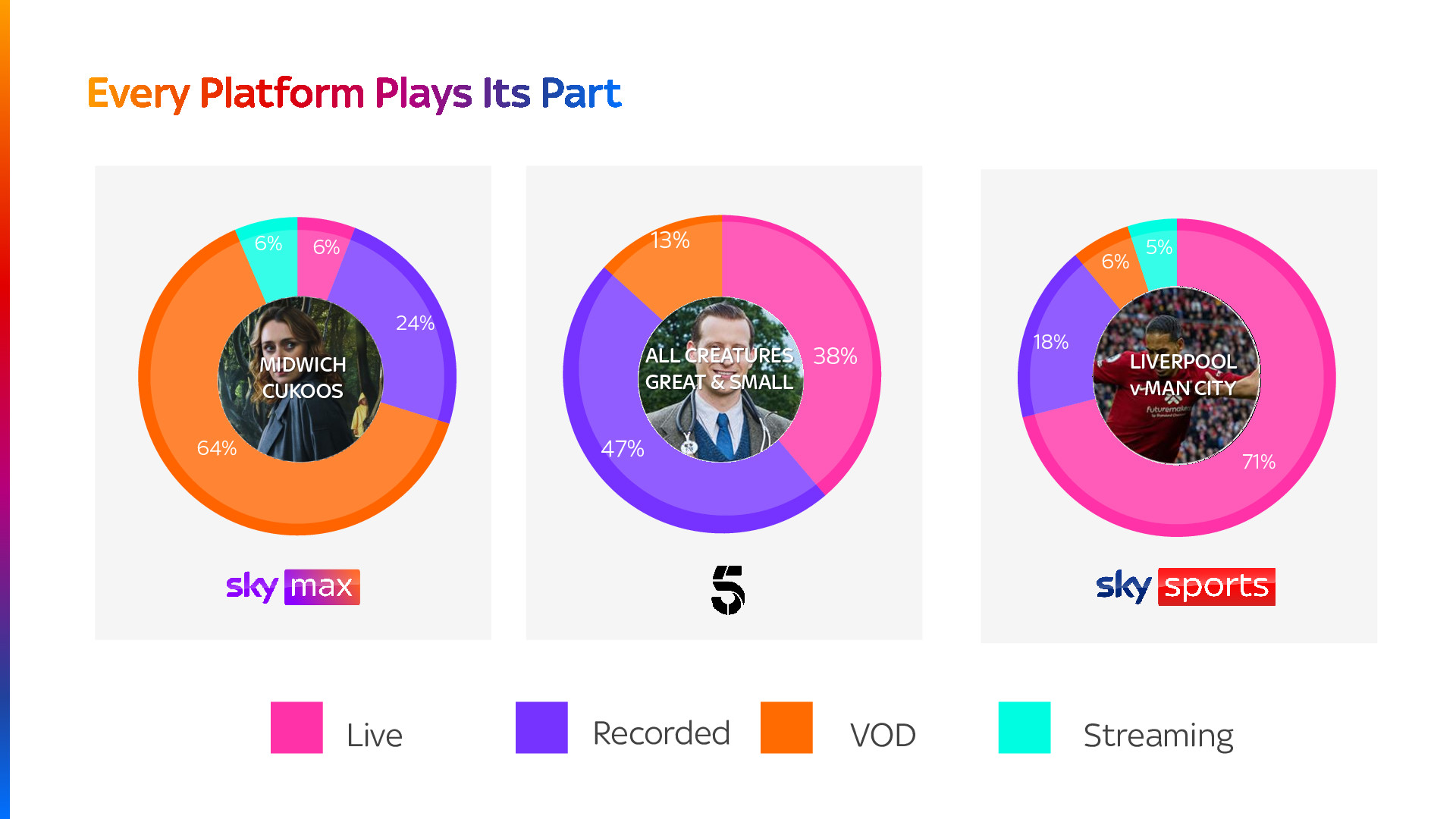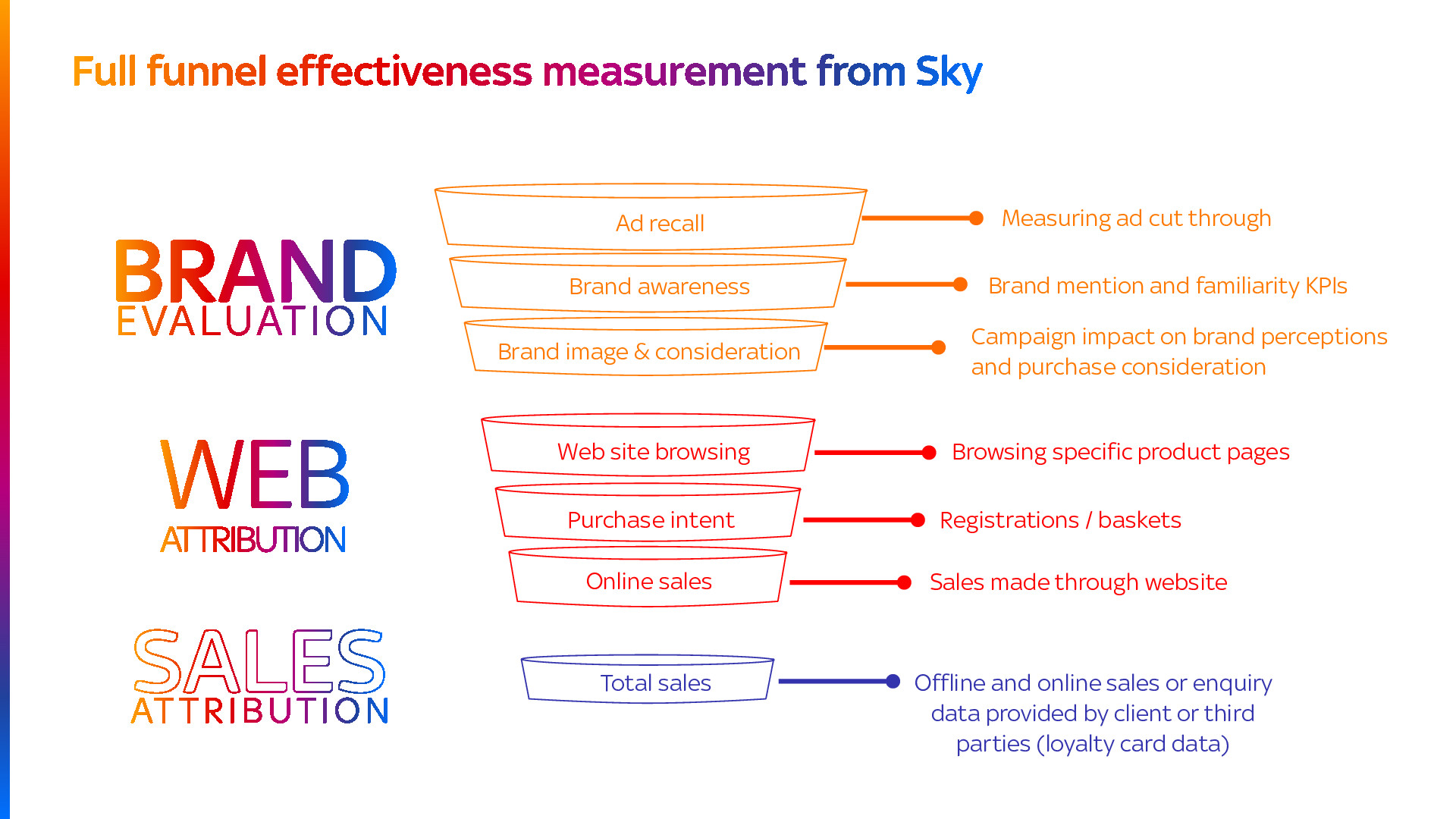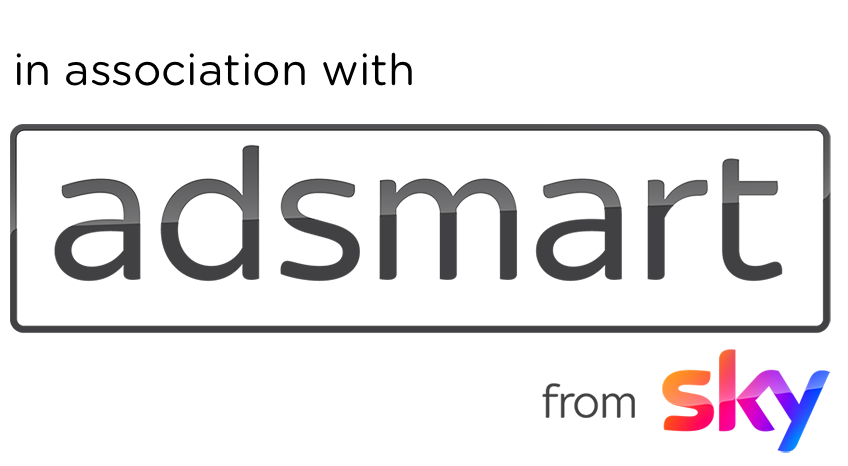
Why AdSmart by Sky is a Game-Changer for School Advertisers.
We believe that most marketers would agree that traditional above-the-line marketing has always relied heavily on television advertising. However, what excites us is that with the introduction of addressable TV, Adsmart is increasingly becoming the cornerstone of many digital marketing campaigns. .
To provide some context for this statement, Sky is part of a larger group. Sky has 23 million customers across five territories and generates £16 billion in revenue. In 2018, they were acquired by Comcast for $42 billion, which has allowed them to diversify into other markets such as Sky Mobile, Sky Broadband, and Sky Glass.
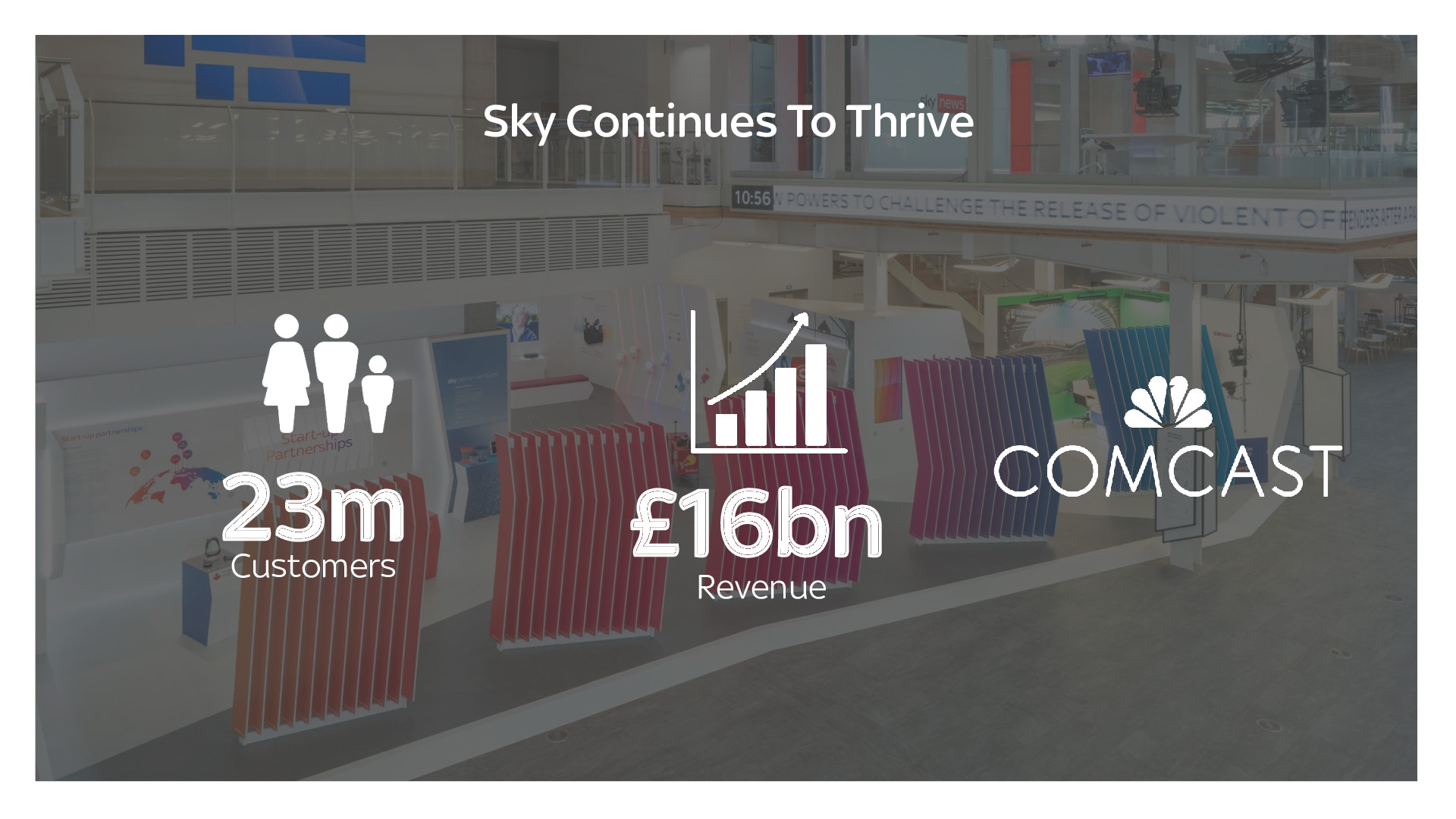
The support and backing from Comcast has solidified their position as a major player in world-class content creation. They excel in all key content pillars, including news, sports, entertainment, documentaries, and drama. With a wealth of trusted broadcast brands and numerous award-winning productions such as Chernobyl and I Hate Susie, they continue to generate over 125 pieces of original content annually.
Last year, Sky invested £24 billion as part of a global content budget, with £7 billion being spent by Sky in Europe alone. Their commitment to developing and delivering trusted premium content is the driving force behind its success.
Next year, they will open Europe’s largest film and TV production facility at Elstree, spending £3 billion on making original content and employing 2,000 people. This is crucial because it underpins their goal of developing and delivering premium content. Skys proposition is to always have something for all its customers, which varies from one household to another. All content must be so good that customers are willing to pay for it, which they do.
Sky is focused on enabling customers to discover and engage with content they love through any means they choose, whether it be live TV, on-demand, or streaming. Although live TV remains the primary means of consumption, they are adapting to the changing landscape of TV viewing habits. Over the past 10 years, the consistent component parts of TV viewing have shifted, with traditional live TV declining but still the biggest contributor to total TV viewing audiences.
This decline is supplemented by catch-up services such as broadcaster VOD and iPlayer, and ITV X. The COVID-19 pandemic has had a surprising impact, with overall TV viewing remaining stable and even increasing slightly. Their aim is to continue providing quality content that customers love and engage with, no matter how they choose to consume it.
In this graph, the yellow bits represent all four subscription models. Netflix and Amazon are experiencing growth in subscription volume, which is something customers are keen to see on their platform. Although there is a staggering amount of total video viewing on all devices, the vast majority of video is still viewed on a TV set in either live TV format or through subscription VOD services.
However, when it comes to video advertising, viewing drops from over five hours to just under 20 minutes. Excluding platforms that don’t carry any advertising like the BBC and Netflix, the majority of all video advertising is viewed on a TV screen. This presents an opportunity for niche advertisers in the education sector to target the households that matter through addressable TV.
TV has always been great for delivering high-quality, brand-safe content to large audiences, and it comes with established measurement systems. Digital, on the other hand, is great for targeting specific audiences and tracking customer response. AdSmart combines the strengths of both platforms, and has been doing it for almost 10 years now.
Sky has worked with over 4,000 advertisers, most of whom were new to TV advertising because it was previously too expensive or broad for their needs. The majority of these advertisers have returned for repeat campaigns because they can prove that their approach works. Among these 4,000 advertisers are many in the education sector, including universities, colleges, and private schools.
Adsmart is based on four pillars that are unique to Sky: scale, content, technology, and data. Let’s walk through each of these.
Scale and technology are key, especially in the context of a Sky Q box. With access to a lot of data, much of it third-party, stored at the box level and on the viewing card. This data provides them with household-level information on which ads should be served to which households. The ads for the relevant box are sent to it via satellite and stored overnight. They are then served dynamically and seamlessly during live or as-live content, replacing ads that would have otherwise been seen in that household.
Adsmart can serve ads to different households based on their specific needs. For example, a young family moving house might see an ad for a new house and removal service, while an affluent family with kids might see an ad for a nursery.
This targeting is seamless and brand-safe, and it works across over 100 channels, including Sky’s wholly-owned channels and third-party channels that Sky represents, such as Channel 5, Discovery, and Nat Geo.
With Adsmart, you don’t need to worry about which channels your prospective students or parents are watching; the technology optimises the audience and serves ads in whatever content any household chooses to watch.
The main goal is to identify the right households and avoid showing ads to the wrong ones. The key is to ensure that the ad is seen in great content that is relevant to the household because they have chosen to watch it out of many options. In terms of data, they have access to a vast amount of information that gives them a deep understanding of each of their 10 million customers in the UK.
Specifically, Adsmart can target 7 million Sky customers and 3 million Virgin Media customers. They have mapped and matched this data to their customer base and supplemented it with data from leading third-party providers like Experian and Mastercard. In total, they offer 1200 different targeting options that can be grouped into 10 broad categories. For example, Experian offers 66 different mosaic types that can be used to identify which ones match your core customer profile. Demographics and financial profiling are also crucial factors. Once you have determined your target audience, the next step is to choose the appropriate geography. While some customers may prefer to buy nationally, most choose to target specific postcode areas.
If targeting on a postcode basis is not detailed enough, they can get even more specific by targeting using local authorities or creating bespoke geo boxes around a particular location such as a school, college, or university. This allows them to limit the target audience to a specific area and shape, such as a five-kilometer square or a custom shape following a road network. This approach is highly flexible and cost-effective since you only pay for ads that are seen in real-time.
For instance, for a 30-second commercial, you won’t be charged unless the viewer watches at least 23 seconds of the ad. Sky collects viewing data from a vast panel of half a million households and uses it to generate detailed campaign performance reports for their 10 million customers in the UK. The targeting options are vast and include demographic, financial profiling, and other third-party data, such as Experian’s 66 mosaic types. With Adsmart, you can be sure that your ads are only served to the right households, and that you get the best value for your money.
It’s important to supplement and enhance your Smart TV campaign by using the same demographic and geo-targeting approach to reach people through digital platforms, even if they’re not Sky subscribers. The targeting options still work the same way as described earlier, even for free apps like Sky Sports and Sky News. This provides a significant boost to the campaign.
The on-demand catch-up content, known in the TV industry as “vault video on demand”, is also very powerful. With so much content available, being able to dynamically insert ads into this catch-up content is crucial. Advertising in this type of content matters because of its significance to the end-user, making the ads more relevant and interesting.
Sky Atlantic is at the bottom of the graph while Sky News is at the top, and each platform plays its part in delivering effective advertising. For instance, appearing in live sports is particularly powerful, while dynamically inserting ads into the box set content like Midwich Cuckoos on Sky Max also works well. The short-form bite-size video market is also a powerful tool, and digital products like Sky News and Sports apps are experiencing fantastic growth.
Our Sky Premier League Eclipse service on YouTube has experienced a 100% year-on-year growth and is the largest sports channel on YouTube. In the UK, Sky has 36 million monthly users and the statistics show impressive performance. It is an excellent way to complement an addressable TV campaign by using the same demographic and geo-targeting on digital platforms.
Their focus is on driving better outcomes and can provide you with valuable data on various KPIs such as web traffic, inquiries, sales values, brand awareness, and identifying product types that sell well. They can track these KPIs all across the effectiveness funnel and provide meaningful data. Sales attribution is relatively straightforward, but they can also make a material impact on web traffic by linking their customer base’s IP addresses to their addressable TV campaign.
This provides clear insights into how many people are responding to the ad and visiting the site. Attribution can identify incremental web visits and is a simple and secure process that provides instant access to reports.
like any digital marketing platform, effective planning, execution, evaluation, and re-planning are crucial. We are confident that this is all the good stuff you have always known about TV advertising, but enhanced to be relevant in the digital space for a market like yours.
Summary:
The article discusses how addressable TV, specifically Adsmart by Sky, is becoming a crucial part of digital marketing campaigns. Sky, part of Comcast, is a major player in content creation, with a focus on delivering trusted premium content to its customers. With Adsmart, Sky can combine the best of TV and digital to deliver targeted ads to specific households based on their needs, all while optimising the audience and ensuring that the ad is seen in relevant content. The article also mentions that many advertisers in the education sector, including universities, colleges, and private schools, have worked with Sky through Adsmart.
In terms of data, Adsmart uses third-party data to enrich their understanding of households and their preferences. This data includes information on things like age, gender, and income, and can also be used to target specific geographical areas. This allows Adsmart to identify and serve ads to households that match the advertiser’s target audience, making their campaigns more effective and efficient.
Adsmart also uses machine learning to optimise campaigns in real-time. By analysing data on ad performance and viewer behaviour, the system can adjust the targeting and delivery of ads to maximise their impact. This means that advertisers can see immediate results and make adjustments as needed, ensuring that their campaigns are always effective.
Overall, Adsmart is a powerful tool for advertisers looking to reach their target audience with precision and effectiveness. By combining the best of TV and digital advertising, Sky has created a unique platform that can help businesses of all sizes
FAQ
Q: What is TV advertising and why should my school/college consider it?
A: TV advertising is a marketing strategy that involves creating a commercial to be broadcasted on television to promote a product or service. In this case, the product or service would be your school or college. TV advertising can be effective in reaching a large audience and creating brand awareness.
Q: What are some things to consider before creating a TV advertisement?
A: Before creating a TV advertisement, it’s important to consider your target audience, budget, and messaging. You’ll want to create an advertisement that speaks directly to your target audience, whether that’s prospective students, parents, or other stakeholders. You’ll also want to consider your budget, as TV advertising can be expensive. Finally, you’ll want to ensure that your messaging is clear, concise, and aligned with your school or college’s brand and values.
Q: How can I create an effective TV advertisement for my school/college?
A: To create an effective TV advertisement, you’ll want to work with a professional advertising agency that specializes in TV commercials. They can help you with everything from creating the script to filming and editing the commercial. You’ll also want to ensure that your advertisement is visually engaging, features real students or faculty members, and includes a clear call-to-action, such as visiting your school’s website or attending an upcoming event.
Q: How can I measure the success of my TV advertising campaign?
A: There are several ways to measure the success of your TV advertising campaign, such as tracking website traffic, leads, and enrollment rates before and after the campaign. You can also conduct surveys or focus groups to gather feedback on the effectiveness of the advertisement.
Q: Are there any other advertising strategies I should consider in addition to TV advertising?
A: Yes, there are many other advertising strategies you can consider in addition to TV advertising, such as social media advertising, search engine marketing, and display advertising. It’s important to create a comprehensive marketing strategy that includes multiple channels to reach your target audience.
Q: What should I keep in mind when creating a TV commercial for AdSmart?
A: When creating a TV commercial for AdSmart, it’s important to consider the creative aspects of your advertising and the messages you want to convey. Keep in mind that your first impression needs to be powerful since you’re likely to reach people who are encountering your brand for the first time. You should also consider the audience’s state of mind, which is completely different compared to online spaces. Their attention is completely focused on the screen, so it’s important to make it count.
Q: How does creating online ads for social media platforms differ from creating TV commercials for AdSmart?
A: Compared to online ads on platforms like Facebook and Instagram, people’s state of mind when they’re watching TV is very different. When scrolling through social media, people have short attention spans and are difficult to engage. Therefore, online ads need to be bold, with big text and a short message, while TV commercials can be longer and more focused on storytelling.
Q: What should I consider when preparing for my AdSmart ad campaign?
A: It all begins with understanding your audience and what will resonate with them. From there, you can identify the core objective and message of your campaign. With TV advertising, you have just one moment to leave a lasting impression, so your message needs to be clear and focused. It’s important to keep in mind the budget you have allocated for your campaign so that you don’t overspend.
Q: How can I repurpose existing video content for AdSmart TV advertising?
A: If you already have existing video content, you can repurpose it for TV advertising. However, you may need to refine your video content to ensure that it feels appropriate for TV advertising. One simple way to improve it is by focusing on sound design. You can add sound effects, music, and voiceover, which is especially critical if you want to tell a proper story. To ensure that your existing content is suitable for TV advertising, you should discuss with the production company and verify that the cameras used and resolution size are appropriate.
Q: How much does it cost to run an advertising campaign using AdSmart?
A: The investment to run an advertising campaign using AdSmart starts from £3,000 for the ads, not including the production of your video content. This will help guide your approach. If you have a larger budget and plan to run the ads continuously or leading up to an open day, it may be worth investing in creating a showpiece ad from scratch.
Watch our latest AdSmart webinar
Get access to our webinar to see just how AdSmart can benefit your school.
Reach potential families for your next open day using targeted marketing from Sky TV, and fill your school.
Unify and AdSmart from Sky can help you reach your target audience with cutting-edge technology, boosting your school admissions.
AdSmart from Sky has been adopted by independent schools, and parents are already sharing the news.
With the targeted audience options at your disposal, you can create an ad that is only shown to people related to certain social demographics including income, age and education level among others. Advertising in magazines doesn’t even compare and is unlikely to yield as high a return on investment!
